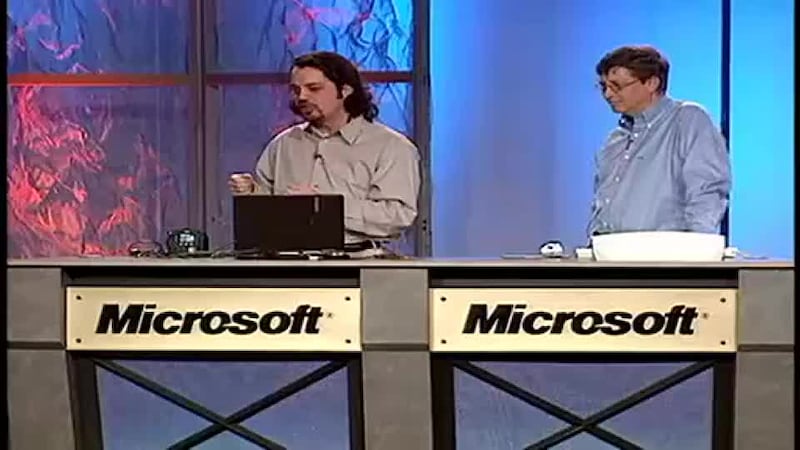On Feb. 28, 2001, at exactly 10:54:32 a.m., the earth beneath western Washington shook so hard that buildings crumbled, roofs caved and the ground split open.
The 6.8 magnitude earthquake lasted just 45 seconds, but it felt like an eternity to those who rushed to take cover.
In less than a minute, the quake would cause hundreds of injuries and millions of dollars in damage.
The Nisqually earthquake resulted in just one death, a person who died from a heart attack.
Western Washington rocked
“Earthquake! Get on the air now! Now! Now! Get on the air! Let’s go!”
Those were the words former KIRO 7 reporter Brian Wood shouted as the ground began to rumble.
He and KIRO 7 Chief Photojournalist Scott Crueger were in the mayor’s conference room on the 12th floor in the old Seattle City Hall when their story for the day instantly changed.
Their quick action brought some of the first live pictures of the quake to viewers in Seattle, and eventually, around the world.
Just one mile north, parts of the ceiling at the Westin Hotel crashed down on dozens of people packed in a ballroom for a technology conference. It interrupted Microsoft’s co-founder, Bill Gates, in the middle of demonstrating the new Windows XP program.
In Pioneer Square, buildings crumbled and sent bricks and debris onto parked cars.
Parts of the iconic Starbucks Center in SoDo crashed to the ground.
The South Sound took the brunt of the damage.
In Olympia, the state Capitol building cracked, and chandeliers swayed as the ground rumbled.
One witness described the chaotic scene in the Capitol building as people ran for their lives. “People were running down the hallways. I could hear people screaming downstairs, ‘Are you OK? Get out of the building.’ Obviously, a lot of panic,” said Burke Long.
Across the street from the Capitol, the state supreme court’s chief justice was meeting with Mongolian dignitaries. He quickly ushered them to a doorway for safety.
Just five miles east in Lacey, food flew off the shelves at a Megafoods Grocery Store as workers calmly and quickly ushered customers out of the building.
In Maple Valley, neighbors dealt with a much different disaster caused by the quake.
Seconds after the earthquake, a landslide barreled down toward the community. It took out homes and even trapped some neighbors inside.
Debris from that landslide filled a channel of the Cedar River, causing flooding upstream.
Airports and bridges across Washington had to close for inspection and repairs.
In all, the 2001 Nisqually earthquake caused between $1-4 billion in damages.
Lessons learned
The earthquake’s epicenter was 32 miles below Anderson Island, which helped buffer some of its force, but it could still be felt as far away as Vancouver, Montana and Portland.
It did serve as a warning to the state.
Since the quake, seismic retrofitting work has been done on Washington bridges.
King County relocated its state-of-the-art emergency operations center to Renton, where it sits on top of a ridge of solid bedrock and has an 800MHz radio communication to nearly all of King County.
Major buildings, schools and hospitals made upgrades to better protect infrastructure.
Science has advanced with new tools to better track the activity and monitor what is going on below the surface.
Washington Emergency Management will soon launch an alert system to warn people on their phones, similar to a weather alert or Amber Alert.
In May, the ShakeAlert Earthquake Early Warning System will be active in Washington.
It will provide the vital seconds needed to alert people an earthquake is happening and shaking is imminent.
Oregon is also joining ShakeAlert this year, and California joined in 2019.
If you do experience an earthquake, it is recommended you:
- DROP to the floor.
- Take COVER under a sturdy table, desk or chair.
- HOLD ON until the shaking stops.
Cox Media Group











